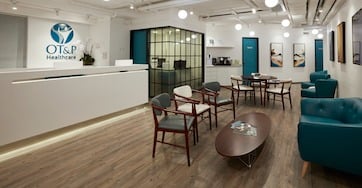Home birth, as explained by the name, occurs in your home rather than a hospital. Some mothers-to-be prefer home births as the familiar, homely environment can make them feel safer and more in control and can have a calming and relaxing effect.
Can I have a home birth in Hong Kong?
Many mothers-to-be believe that home births are illegal in Hong Kong. But much like water birth, home births are rare and not recommended as stated by The Handbook for Midwives, issued by the Midwives Council of Hong Kong [1].
Why can home births be unsafe in Hong Kong?
As home births are uncommon and not recommended by the Midwives Council, it is difficult to ensure the safety of the process as most licensed midwives will not provide this service. Any home birth attempted alone and unsupported can be dangerous for both the mother and the baby.
In an emergency, hospitals are more equipped to provide immediate medical aid. Should a complication arise during labour or birth, time is of the essence, so waiting for ambulance staff to arrive and most apartment elevators not meeting the space requirements for a stretcher, can further delay and complicate matters.
Alternatives to Home Birth
If the idea of a hospital environment for labour and birth is causing you anxiety and you are looking for other ways for creating a more natural and calm birthing environment, there are alternative options available to you.
Doctors and midwives in Hong Kong are experienced in walking you through every step of the way for a natural hospital birth and hypnobirthing. With the right help and assistance, you can create a birthing plan that caters to your needs – ask your midwife to talk you through your options.
Below are some suggestions to help you to achieve a more natural birth experience:
- Consider spending the early part of labour at home. You will be most comfortable and relaxed spending this stage at home. You can change positions and move freely from room to room, take a bath or shower, eat and drink, and feel uninhibited. This time at home will also help you and your birth partner to get into the rhythm and pattern of labour and birth support. This will provide you continuity, safety and security from home to hospital. Continuous support from a birth partner has been found to reduce the need for medicinal pain relief, increase spontaneous vaginal birth, reduce Caesarean section rate, shorten labour, as well as improve your birth experience. (Cochrane database 2017)
- If home birth is mainly appealing to you because it would feel more intimate and comfortable, you can consider requesting a private room in your designated hospital. This option depends on whether you are choosing a private or public hospital and the capacity at the time, as rooms in Hong Kong hospitals are limited.
- Hypnobirthing is a popular method among mothers who want to ensure they stay calm during the delivery and to feel relaxed and peaceful after childbirth. It can help you to ‘zone out’ from the hospital environment. It became quite popular because Catherine the Duchess of Cambridge used this method to have her third baby in 2018.
- Aim to make the hospital room you will labour or birth in as relaxed as possible. Ask the staff to help you. This may only involve a few simple adjustments to help you feel more at home and relaxed. Low lighting, quiet voices, a familiar picture in a frame, music playing, some aromatherapy, or some props like beanbags or yoga mats for example.
- At OT&P, we also provide Birth Breathing Classes perfect for women who want to learn a more natural way to deal with stress and pain during labour. These meditative workshops equip moms-to-be with breathing techniques that will be useful before, after and during the big day.
- Consider natural forms of pain relief such as a TENS machine. TENS (transcutaneous electrical nerve stimulation) is a method for pain relief, including labour pains [2]. It is done using a small battery-operated device that has leads connected to sticky pads called electrodes.
- Massage and heat are also helpful for natural pain relief during labour [3]. Using a warm compress is a welcome non-medical addition to your pain management plan. Have your birth partner learn some labour massage techniques.
Help at OT&P
Whatever your birth wishes, if you would like to learn more about your options, we have a team of experienced midwives and obstetricians to support you through everything related to giving birth. Please know that experienced OT&P midwives are here and happy to help. We also offer prenatal classes for parents.
References
1. 2014. Handbook For Midwives. [ebook] Hong Kong: Midwives Council of Hong Kong. Available at: <https://www.mwchk.org.hk/docs/Handbook_for_Midwives_e.pdf> [Accessed 10 November 2020].
2. NHS. TENS (transcutaneous electrical nerve stimulation). (2018). Retrieved December 08, 2020, from https://www.nhs.uk/conditions/transcutaneous-electrical-nerve-stimulation-tens/
3. Non-medical pain relief during labour. (2020). Retrieved December 08, 2020, from https://www.pregnancybirthbaby.org.au/non-medical-pain-relief-during-labour

 Central General Practice
Central General Practice
 Repulse Bay
Repulse Bay
 Clearwater Bay
Clearwater Bay
 BodyWorX Clinic
BodyWorX Clinic
 Central Specialist Clinic
Central Specialist Clinic
 MindWorX Clinic
MindWorX Clinic
 Partner Clinics
Partner Clinics
 Family Clinic
Family Clinic
 OT&P Annerley Midwives Clinic
OT&P Annerley Midwives Clinic



